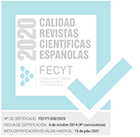Alpine plant communities in the Picos de Europa calcareous massif (Northern Spain)
Résumé
Mountains of Southern Europe are important refuges for cold-adapted plants, and the characterization of vegetation diversity in these areas is a relevant topic for biodiversity conservation. Here we report a comprehensive classification of plant communities in the highest altitudinal belt of the Picos de Europa, a biodiversity hotspot of Northern Iberian Peninsula. We compiled vegetation plot data sampled in the three calcareous massifs from 1800 to 2600 m.a.s.l., and analysed species composition by using cluster analyses and Nonmetric Multidimensional Scaling (NMDS). Optimal classification and the interpretation of multivariate analyses allowed us to recognize two major vegetation types and six clusters that were characterized by their floristic composition, altitudinal range and phytosociological classification. The first vegetation type (alliance Festucion burnatii, class Festuco Hystricis-Ononidetea) corresponds to stripped habitats subjected to cryoturbation and represented by two community types (Helianthemo cantabrici-Festucetum hystricis ass. nova and Jasiono cavanillesii-Helictotrichetum sedenensis ass. nova). A second vegetation type includes alpine-like communities with higher biomass (alliance Armerion cantabricae, class Festuco-Seslerietea) represented by snow-bed (Ranunculo carinthiaco-Poetum alpinae ass. nova), mesophilous (ass. Pediculari fallacis-Armerietum cantabricae) and scree (Saxifrago coniferae-Helianthemetum urrielensis ass. nova) grasslands; and relict wind-edge swards (alliance Oxytropido-Elynion, class Elynetalia myosuroidis) represented by relict alpine communities (ass. Oxytropido neglectae-Kobresietum myosuriodis). Our results highlight the Picos de Europa as a unique refuge for alpine vegetation and demonstrate historical relationships with both Alpine-Pyrenean and Iberian mountain ranges.
Téléchargements
##submission.format##
Licence
Lazaroa is an open access journal to promote global exchange knowledge. It facilitates unrestricted access to its contents from the moment of publication in its electronic edition. The originals published are property of the Universidad Complutense and it is mandatory to cite such source in case of total or partial reproduction. All contents are distributed under a Creative Commons License 4.0 (CC BY 4.0). This circumstance must be expressly stated in this way when necessary. You can check the informative version and legal text of the license.
Lazaroa does not charge for download or publishing any article.








